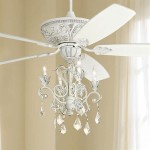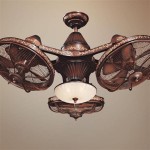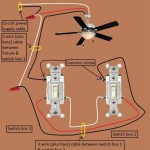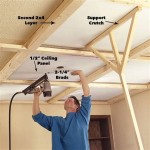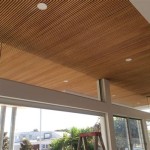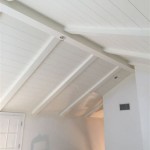Hugger vs. Low Profile Ceiling Fan Blades: Understanding the Differences and Making the Right Choice
Ceiling fans offer a versatile solution for temperature regulation and energy efficiency in residential and commercial spaces. Modern ceiling fans come in a wide array of styles, sizes, and features, making selecting the most appropriate option for a specific setting sometimes challenging. One critical aspect to consider is the blade profile, particularly the choice between hugger and low-profile designs. These two types differ significantly in their mounting and performance characteristics, influencing airflow and overall aesthetic appeal. This article will explore the nuances of hugger and low-profile ceiling fan blades, providing a comprehensive understanding to assist in making an informed decision.
The terms "hugger" and "low-profile" are often used interchangeably, referring to ceiling fans designed for rooms with low ceilings. While similar in purpose, there are subtle distinctions that affect their installation and performance. Understanding these distinctions allows for optimal selection based on individual room dimensions and desired airflow. Often, the choice depends squarely on the height of the ceiling, code constraints, and personal preference within the space.
Understanding Hugger Ceiling Fans
Hugger ceiling fans, also known as flush mount ceiling fans, are designed to sit almost directly against the ceiling. This design maximizes headroom, making them ideal for rooms with ceilings lower than 8 feet. The motor housing of a hugger fan typically has a minimal downrod or no downrod at all, minimizing the overall drop from the ceiling. This close proximity to the ceiling can present both advantages and disadvantages in terms of installation and airflow.
Installation of a hugger ceiling fan requires careful attention to the wiring and mounting bracket. The minimal space between the fan and the ceiling necessitates precise alignment and secure attachment. It’s crucial to ensure that the electrical box in the ceiling is rated to support the weight of the fan. Incorrect installation can lead to instability and potential safety hazards. Hugger ceiling fans are typically easier to install for those familiar with electrical work, as there is less weight to manage compared to fans with longer downrods.
The primary advantage of a hugger ceiling fan is its ability to fit into rooms with low ceilings without obstructing movement or creating a sense of confinement. This is particularly beneficial in apartments, older homes, or rooms with dropped ceilings. The compact design also contributes to a cleaner, more streamlined appearance, which can be aesthetically pleasing in certain interior design styles. However, the close proximity to the ceiling can limit airflow to some extent. The blades have less room to circulate air effectively, which can result in reduced cooling efficiency compared to fans with longer downrods.
Modern hugger ceiling fans often incorporate design features to mitigate the airflow limitations. Blade pitch, blade shape, and motor power are optimized to maximize air movement, even within the constraints of the low-profile design. Many models also include multiple speed settings, allowing users to adjust the airflow to their specific needs. Choosing a hugger fan with an energy-efficient motor can further enhance its performance and reduce energy consumption. Furthermore, considering the blade span is crucial. Larger blade spans generally translate to better airflow, even in hugger models.
Exploring Low Profile Ceiling Fans
Low-profile ceiling fans also aim to minimize the distance between the fan and the ceiling, but they often incorporate a short downrod. This small gap allows for slightly better airflow compared to hugger ceiling fans. The term "low-profile" is generally more descriptive of the overall appearance, indicating a design that doesn't protrude excessively from the ceiling. The distinction between hugger and low-profile can, therefore, be somewhat blurred, as manufacturers may use the terms interchangeably depending on the specific design and features.
The installation process for a low-profile ceiling fan is similar to that of a hugger fan, but the presence of a short downrod can provide a bit more flexibility. This allows for easier wiring and connection of the fan to the electrical box. However, it’s equally important to ensure that the downrod is securely attached to the motor housing and that the mounting bracket is properly installed. The slightly increased distance from the ceiling can also make it easier to clean the fan blades and motor housing. This is an important consideration for long-term maintenance and performance. Low-profile fans may also be more adaptable to ceilings that are not perfectly level.
Low-profile ceiling fans offer a compromise between the space-saving benefits of hugger fans and the improved airflow of fans with longer downrods. The small gap between the fan and the ceiling allows for more efficient air circulation compared to hugger models. This can result in better cooling performance, particularly in larger rooms. The slightly more pronounced design can also contribute to a more visually appealing aesthetic, adding a touch of depth and dimension to the ceiling. However, it’s important to ensure that the overall height of the fan is still appropriate for the room, especially in spaces with low ceilings. A low-profile fan that hangs too low can still create a sense of confinement and potentially pose a hazard.
Many low-profile ceiling fans incorporate modern design elements and features to enhance their performance and functionality. These include remote controls, dimmable lights, and integrated smart home compatibility. Selecting a low-profile fan with these features can provide added convenience and control over the fan's operation. Furthermore, the availability of various blade designs and finishes allows for customization to match the existing décor of the room. Choosing a low-profile fan that complements the overall aesthetic can enhance the visual appeal of the space.
Key Considerations for Choosing Between Hugger and Low Profile Ceiling Fans
When selecting a ceiling fan for a specific space, several key factors should be considered to ensure optimal performance and satisfaction. These factors include ceiling height, room size, airflow requirements, aesthetic preferences, and budget constraints. Carefully evaluating these factors will help narrow down the options and identify the most suitable type of ceiling fan.
Ceiling Height: This is perhaps the most important factor to consider. If the ceiling height is below 8 feet, a hugger ceiling fan is generally the recommended choice. This will maximize headroom and prevent the fan from obstructing movement. If the ceiling height is slightly higher, a low-profile ceiling fan with a short downrod can be a viable option. It’s crucial to ensure that the bottom of the fan blades are at least 7 feet above the floor to comply with safety regulations and prevent accidental contact. Taking precise measurements of the ceiling height is essential before making a purchase.
Room Size: The size of the room will influence the choice of blade span and motor power. Larger rooms require fans with larger blade spans and more powerful motors to effectively circulate air. Smaller rooms can typically be adequately cooled with smaller fans and less powerful motors. Consulting a sizing guide or seeking advice from a qualified electrician can help determine the appropriate fan size for a specific room. Over-sizing a fan can lead to excessive noise and energy consumption, while under-sizing a fan can result in inadequate cooling.
Airflow Requirements: The desired level of airflow will depend on the climate, the room's insulation, and the occupants' preferences. Rooms that tend to get hot or stuffy may require fans with higher CFM (cubic feet per minute) ratings. Hugger ceiling fans typically have lower CFM ratings than fans with longer downrods, so it’s important to choose a model with a powerful motor and optimized blade design. Low-profile ceiling fans can offer a good balance between space-saving design and airflow performance. Consider the room's vulnerability to heat and humidity to determine airflow.
Aesthetic Preferences: Ceiling fans are not only functional appliances but also decorative elements that contribute to the overall aesthetic of a room. Hugger ceiling fans tend to have a more streamlined and understated appearance, while low-profile ceiling fans can offer a wider range of styles and finishes. Choosing a fan that complements the existing décor of the room is important for creating a cohesive and visually appealing space. Consider the color scheme, furniture style, and architectural details of the room when selecting a ceiling fan. Integration of the fan into the room's design is critical.
Budget Constraints: The price of ceiling fans can vary widely depending on the brand, features, and materials. Hugger ceiling fans are generally less expensive than fans with longer downrods, but this is not always the case. It’s important to set a budget before starting the shopping process and to compare prices from different retailers. Consider the long-term cost of ownership, including energy consumption and maintenance expenses. Investing in a high-quality, energy-efficient ceiling fan can save money in the long run. Furthermore, factor in the cost of professional installation, if you are not comfortable with electrical work.
Ultimately, the choice between hugger and low-profile ceiling fan blades depends on a careful evaluation of these factors. By understanding the nuances of each type and considering the specific needs of the space, one can select the most appropriate ceiling fan for optimal performance, comfort, and aesthetic appeal.

Low Profile Fans Hugger Delmarfans Com

Hugger Low Profile Ceilng Fan Vs Regular Ceiling Fans The Amazing Utility Of

Key Considerations When Purchasing A Low Profile Ceiling Fan Dan S City Fans Parts Accessories

Hugger Ceiling Fans Sleek Solutions For Low Spaces Delmarfans Com

Low Profile Fans Hugger Delmarfans Com

Low Profile Fans Hugger Delmarfans Com

Low Profile Fans Hugger Delmarfans Com

Private Brand Unbranded Hugger Ii 52 In Indoor Matte Black Low Profile Ceiling Fan With 2 Led Bulbs Included Rd4130ah Mbk The Home Depot

Close To Ceiling Fans Ideas Advice Lamps Plus

Private Brand Unbranded Hugger Ii 52 In Indoor Matte Black Low Profile Ceiling Fan With 2 Led Bulbs Included Rd4130ah Mbk The Home Depot
Related Posts

